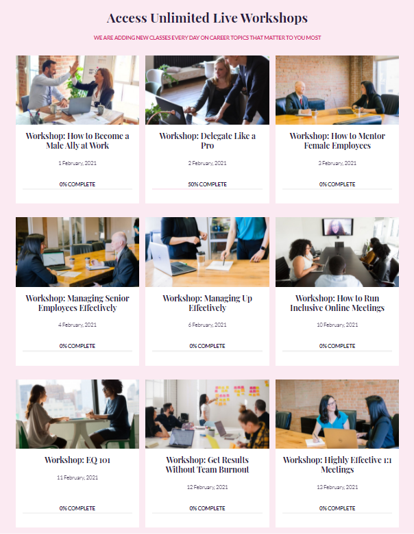Me: I have a great idea to help our team, but I need $200K to make it happen.
Manager: $200K of OPEX or CAPEX?
Me: (At that time, I wasn't sure of the difference) It's for an addition to our building and some upgrades so we can . . . (manufacture more).
Manager: Ok, so you need CAPEX. We do CAPEX planning in August for the following year, and it is February. So, you are too late to get it into the budget for this year and very early for next year’s budget. Where is your business case?
Me: (getting flustered) Umm, business case? I don't have one. Why? Don't you think this is a good idea?
Manager: If I funded every good idea, we would not be in business.
I paraphrased this story to spare you the technical chatter and solutioning in the middle, but you get the hint of how that conversation went down. I had a great idea, and I was confident I could execute it. What I did not have was a business plan to communicate my strategy to the decision-makers and budget approvers for their blessings.
If you are curious to know how things turned out after that conversation with my manager … well, I did not get the funding that year. I was too late in the budgeting cycle to present my case. You see, I was not aware of how early budgeting discussions start in large organizations (and how deep some of them go). However, the following year I was better prepared and ready to go. I had moved on to a new role and had a different project idea that needed CAPEX funding. Armed with the what, the why, and how much, I prepared a solid business plan, fought for my project, and (drumroll, please!!) secured funding!
Great, so now you are thinking good for you (thank you!!). But if you find yourself saying that with a hint of sarcasm, perhaps you have an exciting project proposal that you believe is good for your organization, but you have no idea how to secure the funding you need to make your impact. Don’t worry. What you need is a clear and relevant business case. Let us dive into the ABC's of building a business case.
"A goal without a plan is just a wish." - Antoine de Saint-Exupéry
Turn to PIVOT - our platform for virtual, instructor-led career training.
Get unlimited access to live professional development classes and learn how to communicate assertively, overcome imposter syndrome, lead effective virtual meetings, and delegate like a pro. Classes start 1 July 2021.
Simply put, your business case is a
written-down version of your project pitch. It is your chance to provide
insight into the underlying problem, rationale for the proposed solution, an explanation
of why now, the cost to implement it, and the risk of doing nothing. Most
importantly, it is quantifying the VALUE of why you are choosing to solve it
now.
Business cases are often lengthy, boring
documents filled with numbers. As an engineer, I love numbers, but when I am the
reader or the decision-maker, I want you to TELL me why I should care. I am not
keen to see tables embedded into prose or interpret tab after tab of a
spreadsheet. The thought of going through that much information makes me want
to take a nap. Just tell me a few key numbers (e.g., NPV and IRR*) to quantify
your impact and leave the rest for a follow-up discussion or presentation
Q&A. If
you are using data, charts, or tables, make it a point to add some descriptive
information to convey the proper context.
(*NPV:
Net present value and IRR: Internal rate of return)
Really anything you want that gets your point across. Here
are some of the typical questions I try to answer when writing my business
cases:
1. What
is the underlying business problem?
Lead with the
need and give as much detail as is appropriate for your audience.
2. What
is the solution? Are there alternatives?Think of the good,
better, and best options. For each solution, quantify the benefits, forecast
the cost, and figure out feasibility.
3.What
is the value of the solution to the company? What incremental value would
the company get for additional investment in a “better” option over a
“good” one?
- When
you are presenting this part, do not forget to include your assumptions. It
is critical to state if you are basing your analysis and resulting
recommendation on something like a significant market or policy change.
Every analysis has assumptions because you are predicting the future!
- Assumption
and risk are two sides of the same coin. If you have significant risks,
acknowledge them.
-
Lay
down the high-level cost of the solution. When presenting multiple
solutions, use a table for easy comparison. Calculate NPV and IRR as well
and summarize the comparison. It is also good (but not critical, in my
opinion) to include solution payoff periods. If NPV is positive, the
project is investable, so the payoff is a moot point.
4. What
is your proposed recommendation? You must
provide a recommendation and your strategy for solving the problem. Convince
your stakeholder why your proposed recommendation is the preferred solution to
the problem.
5. Bonus
question: Do I need a spreadsheet?
Maybe but do
not rely on anyone reading it. Include a spreadsheet as supporting evidence in
an appendix.
You can
choose to include additional background information, details on each of the
solutions, and timelines for implementation as is appropriate for your project
but remember this is a preliminary analysis.
You only need enough points to get to the next step, which will include building
out more details for your project. Do not exhaust yourself at this stage with
analysis because you might get a ‘no’ response (and that is ok, everything cannot
be funded).
A good plan today is better than a perfect plan tomorrow. ~ George S. Patton
There is no one correct answer to this. You
can choose to present your business case in any format. I prefer written
paragraphs, middle school book report style with headings to separate my topics
and tables, but you may choose slides, or any other format that you are
comfortable with. The key thing to remember is it is a written communication for a business audience, so what you put
together should stand on its own without your verbal presentation and
commentary.
If this is your first business case or
you want validation that you are on the right track, I recommend getting a
trusted advisor or team member within your company to read a draft and provide
feedback. Each company is different in its expectation of what to always include
(or never include) in a business case. You want to make sure that your
deliverable measures up to the management team’s expectations when they read it
for the first time. Do your homework and avoid being caught in a situation that
needs to go back to include what’s common practice for your company.
Double-check
for typos and grammatical errors. Then, triple-check.
Building a business case will show your manager (and the rest of your team) that you know what you are talking about and showcase your ability to model project financials and create a long-term strategy. It is critical to learn how to present your ideas in writing, and there is no better way to practice your written communication than through building a (better) business case.
Drag to resize
Mollie is an avid reader, lover of fish tacos and honed her public speaking skills through yoga teaching. She got her first management role 3 years into her career and has been building teams, operations and globally used products ever since.
With a double masters in engineering (MEng, Texas A&M University) and business (MBA, Duke University) she brings real-life stories, practical advice, and resources to first time and seasoned managers looking to build strong, self-empowered teams who can get things done.
Drag to resize
Turn to PIVOT - our platform for virtual, instructor-led career training.
Get unlimited access to live professional development classes and learn how to communicate assertively, overcome imposter syndrome, lead effective virtual meetings, and delegate like a pro. Learn the skills you need to succeed at the workplace, when you need it.




